new posts in all blogs
Viewing: Blog Posts Tagged with: how to plot, Most Recent at Top [Help]
Results 1 - 7 of 7
How to use this Page
You are viewing the most recent posts tagged with the words: how to plot in the JacketFlap blog reader. What is a tag? Think of a tag as a keyword or category label. Tags can both help you find posts on JacketFlap.com as well as provide an easy way for you to "remember" and classify posts for later recall. Try adding a tag yourself by clicking "Add a tag" below a post's header. Scroll down through the list of Recent Posts in the left column and click on a post title that sounds interesting. You can view all posts from a specific blog by clicking the Blog name in the right column, or you can click a 'More Posts from this Blog' link in any individual post.
30 Days to a Stronger Novel Online Video Course
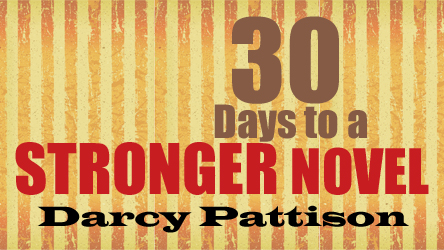
I confess: I love a good cliche or trope.
A cliche is a phrase or expression that has been used so often that it is no longer original or interesting.
A trope is a common or overused theme or device, as in the usual horror movie tropes.
I’m in the middle of plotting a massive 3-book story and I need all the help I can get. Here’s the problem: what happens next?
No, let me rephrase: what could possibly happen next?
Sometimes, I just need to know possibilities, or what a story typically does at a particular stage. What are the possibilities? Is this a place for a murder, a confession, a love scene, or a time to gather information?
Literary folk say that there are only a limited number of stories in the world. Depending on who you talk with, there might be just two stories: a character leaves town, or a stranger comes to town. Others say there are up to 32 plots. I’ve written about 29 plot templates before. And it helps immensely to narrow down the choices.
But that’s on the level of an outline. Now that I’m deep into deciding on scenes, my imagination comes up short.
Enter tropes. A trope is a common theme, something that’s been done before. That doesn’t scare me away, because it’s the same as the variety of themes. Every story is a cliche, trope or template in many ways. It’s all in how you TELL that story. The beauty is in the particulars.
Romantic Subplot
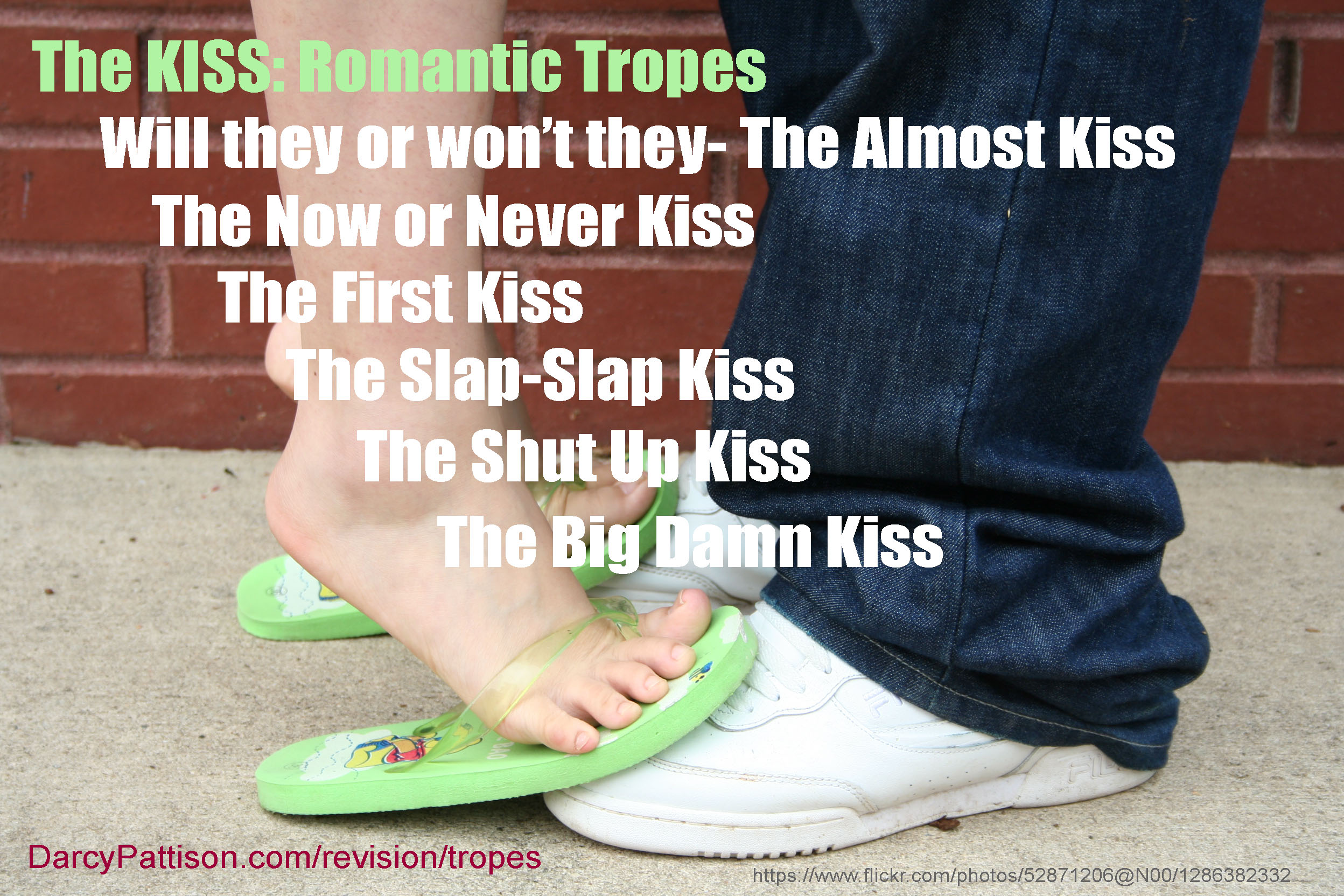
My story needs a romantic subplot. I know the basics.
Act 1: Boy Meets Girl/Girl Meets Boy
Act 2: Boy and Girl Fight or are otherwise kept apart.
Act 3: Boy and Girl get together.
But what else? What is possible at each stage?
I turned to TVTROPES.org for help. Their site is a wiki that list all sorts of tropes. The Romantic Arc Tropes list was helpful because it listed typical things that happen at every stage of a romantic relationship.
For example, a story might start with this trope/subtropes:
Love Before First Sight
- Because Destiny Says So
- Childhood Marriage Promise
- Red String of Fate
- Girl of My Dreams
- New Old Flame
Each of the tropes listed has its own wiki page, which explains the trope in detail. Particularly valuable are the examples drawn from traditional literature, manga, comic books, fanfics, films, live-action TV, professional wrestling, table top games, theater, video games, webcomics, western animation, real life and more. It’s a treasure trove of examples of the POSSIBILITIES of a particular stage of a relationship.
In fact, I used this romance arc by choosing one trope from each stage of a relationship and slotting that into my story.
Place Holders
Are you afraid that my story will be trite and boring? I’m not. I know that this is a trope and therefore, I must transform it in the storytelling phase of the project. Right now, though, this trope acts as a place holder, something that indicates approximately what will happen in this spot of the story, but not exactly. The nuances that make it fresh await the actual writing.
Using tropes to hold a place with something reasonable makes the plotting easier. I’m loving this help in plotting.
Here are some Arcs to get you started. Be warned: this is a massive wiki and it’s easy to get lost in it. Know what you are looking for and get it/get out.

Find Darcy Pattison Books in the iBook Store
Plotting is probably the hardest thing I do. I can explain to you 29 different plot templates. And I often write about plotting a novel. Theory, I know. And I know that I can plot a story pretty well. It’s just HARD.
The problem is that there are a series of inter-connected scenes which build to a climax. The structure of events, though, needs to progress from an introduction of a character goal, dramatizing problems and obstacles to getting that goal, and then, finally some resolution, either a happy or sad ending.
OK. I can slot events into a novel structure from a structural viewpoint. For example, at the mid-point of a story, the hero’s journey, the Snowflake method and other plot paradigms might ask you to provide a bleak moment for the main character. There should be a mini-death: the death of hope–the character will never reach your goal; the death of a feeling of safety, and so on.
Knowing that is easy. The exact type of mini-death that is best for the current WIP, and figuring out how to dramatize that event (Show, Don’t Tell), is hard.

Storytellers Statue on Buena Vista Street in Disney California Adventure Park. One of the most amazing American storytellers that ever lived.
We are in the Business of Storytelling
What’s my answer to this straight-laced method of working? Storytelling.
Several articles recently reminded me that I am not just a writer, but a writer of stories. I am getting way to hung up on the theory and I am forgetting that i can just tell the story and have fun with it. Sure–I know that certain plot elements will make the story stronger, but those things are killing my joy in writing. So, I started telling my story.
Once upon a time, there were two water worlds. One world—Rison by name—was dying, the result of misguided scientists trying to act as God and control the natural forces of the planet. The inhabitants knew their time was limited and sought a refuge, a new home. The other water world—called Earth—caught the Risonian’s attention because the inhabitants only lived on land. Surely, they could share their water, the only place the creatures from the dying world would ask for.
Ah, but therein lies the problem. Sharing.
How do creatures put aside their own fears and self-interest and share? And, how can creatures do so willingly? When would the long-term benefits outweigh the short-term problems.
This could cause a war: if you don’t give us room on your planet, maybe we’ll just take over your planet.
The voice isn’t right. There’s not an opening scene. But right now, none of that matters because I don’t know the story. The first draft is to tell you the story; every draft after that is the question of how to craft the story in the most dramatic and compelling way for your readers. Right now, I’m just trying to tell a story. Crafting that into a novel will come later. Come. Listen to my story. . .
A side note: Did you know that if you have an iPhone, you can ask Siri to tell you a bedtime story. She’s told me so many bedtime stories, that she refuses to do it again–unless I beg.

The ALIENS have landed!
"amusing. . .engaging, accessible," says Publisher's Weekly
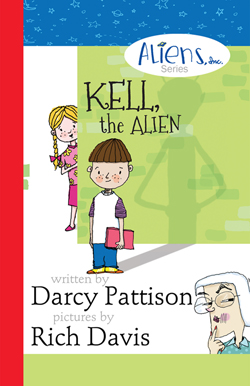 |
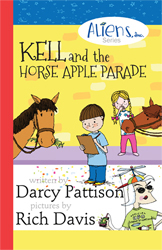 |
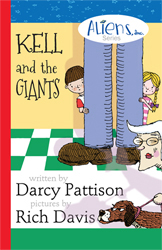 |
I am writing a science-fiction trilogy and I’d like it to have general appeal to kids and teens. So, recently, I went to see the new Transformers 4: Age of Extinction to see what I could learn. Here’s one of the official movie trailers.
If you can’t see this video, click here.
Transformer’s Major Plot Points
SPOILER ALERT: I analyze the plot of this movie, so if you haven’t seen the movie and don’t want to know what happens, stop reading!
Who? Yeager family POV
When? Five years after Chicago was destroyed in the Transformer battles.
- Inciting incident: Inventor-wannabe Cade Yeager and his friend, Lucas, buy a junk truck that turns out to be Optimus Prime.
Cade’s promise to his long-lost wife: I will make sure our daughter graduates from high school; graduation is only a week away, so it seems like a slam-dunk. (The rules have changed: we are all targets now.)
- Plot Point 1: The evil guys—the Cemetary Wind macho dudes—come to collect Optimus Prime (to take advantage of the rare metal that transformers are made of) and threaten Yeager’s daughter, Tessa—the Yeagers all escape with the help of Tessa’s boyfriend, Shane (though Lucas is sacrificed to show the evil that chases them).
- First half of Act 2: Rescue Transformer named Brains from the KSI and the new warrior Transformer, Galvatron is activated to chase them.
- Midpoint: Galvatron and Optimus Prime battle. When Optimus Prime is captured, Tessa is also caught and winds up trapped in the alien spaceship owned by Lockdown, an alien bounty hunter. Yeager and Shane must rescue Tessa.
- Second half of Act 2: Optimus Prime and Tessa are rescued by Autobots, Yeager and Shane. Alien bounty hunter, Lockdown launches into deep space believing he has Optimus Prime on board.
- Plot Point 2: Optimus Prime reveals that Galvatron is really a re-birth of the evil Megatron, who will try to activate the Seed to destroy Earth. They must stop him. The bounty hunter transformer, Lockdown, (To Optimus Prime: You think you were born? You were built and they want you back.) gives KSI a “seed,” which they think will help them make more of the prized metal, but will really destroy Earth.
- Act 3. Optimus Prime releases the Dinobots (T-Rex Transformer robots) and attacks Galvatron and win (though Hong Kong, this time, is destroyed). Lockdown returns to claim Optimus Prime.
- Climax: Cade, Tessa and Shane take risks to help Optimus (thus proving the story’s theme, that humans can rise to the occasion), who is hurt, but ultimately defeats Lockdown.
Promise kept: Tessa has lived to attend her high school graduation, and has a new-found respect for her Dad’s tinkering ways.
Theme: Optimus Prime: How many more of my kind must be sacrificed for humans.
Yeager: It’s not who we are, but who we can be.
There are several main subplots and you could analyze the story from one of the other ones. Here, I’ve concentrated on Cade/Tessa as the main plot. If you want to argue that this is Optimus Prime’s story, I could go for that; however, I think readers/movie fans are more likely to identify with the human characters.
In any case, my point is to learn something.
Action/Adventure or a Quieter Story
Looking at this plot analysis, I realize immediately that I’m not putting enough at stake early enough in the story. My Plot Point I involves the character making a decision. It’s not an action scene where the antagonists arrive to threaten a girl and to recapture a rogue transformer.
Of course–different stories have different needs. I describe quiet stories as having a pastel palette and there is indeed a place for stories like this. Transformer’s palette, however, is bold.
My question to answer: What sort of physical action/adventure palette do I want? Is my story a quiet story, or does it fall farther along the spectrum toward an action/adventure story?

Glue for Act 2
The dreaded sagging middle is always a problem for me. In Transformers, the whole of Act 2 is about Rescue: rescue Brains from the KSI; rescue Optimus Prime and Tessa from Lockdown’s space ship. Notice that the Midpoint twists the story in a tangent direction when Tessa is captured and taken to the alien space ship. Of course, we are worried about Optimus Prime! But he’s a strong and able transformer who is likely to fight his way free at some point. Tessa, however, is a high school senior and it’s not fair that she is caught up in this conflict. It’s a nice way to keep the action going, to up the stakes and to play on the audience’s emotions.
My Act 2 hangs together well, and has a nice Midpoint twist. The same question lingers, though. Do I need/want more action/adventure?
The Last Lap: Pumping up Act 3
We transition into Act 3 with a revelation in Plot Point 3 that Galvatron = Megatron. With such an evil abroad, no one can relax. They MUST take the battle to him. And what a battle! Aliens v. aliens. Over Hong Kong! Dinobots, or a great combination of t-Rex with transformers! What’s not to like? We get lots of exclamation points!!!!
This is indeed a movie built on action sequences and it’s almost non-stop in Act 3.
No, I don’t want my story to be THAT action/adventure oriented. I’ll back off the Transformer’s palette a couple steps.
However, there are a couple nice moments. In the Hero’s Journey, there is often a death scene, followed by a resurrection scene. It’s the death of the hopes of the protagonist, and a renewal of the hope. Optimus Prime is impaled and we think he is dying. One of the story’s themes is that humans have potential. It’s crucial here that Cade, Tessa and Shane work as a team to help Optimus: they remove the “spear,” and help him to defeat the evil Lockdown.
My Act 3 has action, a chase, and some nice possibilities for physical action. As I write it, I must remember to include scenes that highlight the theme in an organic way. If I can find a reasonable Death/Resurrection moment, so much the better.
Thanks for the help, Optimus Prime
Studying popular movies like this can be one way to reevaluate your plot. I’m still early in the plotting process, so this is a perfect time to do this. It doesn’t solve my problems: but it forces me to ask the right questions. And at this stage, that’s what I need: questions that force me to think deeper about my story, the characters, and the plot.

I always find that plotting a novel or longer story is like a jigsaw puzzle.
How do you work a jigsaw puzzle?
People have different strategies. Some like to find all the straight edges and get the borders in place. Others like to find a strong bit of color and start putting together an interesting bit. Others sort out the pieces: one side out/three sides in, two sides out/two sides in–or some other visual way of sorting.
Plots are like this too.
Border strategy: these writers like to outline their story.
Colorful strategy: these writers like to start with a character or a bit of action and build from there.
Sorting strategy: these writers work all around the story, getting bits of action in place, bits of characterization in place and so on.
How jigsaw puzzles help us understand revision
 As I worked on a revision this week, the jigsaw analogy came in particularly helpful. Writers not only create the overall picture of a finished puzzle, they also create each piece.
As I worked on a revision this week, the jigsaw analogy came in particularly helpful. Writers not only create the overall picture of a finished puzzle, they also create each piece.
In revision, this means two things:
- Keep your vision of the finished piece clear in your mind. There’s no box top to look at when we write a novel. There’s only the vision for what the story could be in your mind. You need to keep a clear mental picture of that. And yet, I find the picture changes, much like it does for a painter as s/he paints. I find that I keep the general outline clear, while remaining flexible on details. Does it matter if Jill has a blue sweater or a pink sweater? Maybe. Which means I can let either happen.
- Every part needs to work with every other part. This is a particularly helpful idea when revising a novel. It means that when I am stuck and looking for a solution, I must look to the puzzle pieces already in place to find the answer.
For example, in my WIP, I knew that a birthday party couldn’t come off without a hitch, something needed to jeopardize the story. But what? I tried several things that didn’t work. Finally, I read through the story again, trying to find something that would make the birthday party seem impossible to pull off.
My Main Character (MC) likes to sing and in fact, loves to sing duets with his Dad. Duets. What if two people, without knowing it, planned two birthday parties on the same night? That would put the party in jeopardy: who would go to which party and who would be the loser in the popularity contest? Duet. MC talks to both parties and proposes a Duet, a combined party.
The answer to the plot problem–how to complicate the party–was in the story, as was the solution.
Jigsaw puzzles. We create each piece of the jigsaw and when the story is mostly filled in, it’s difficult. Only one piece will fit there. At that point, look at the overall story, the details of your story. The answer is there, if you look for it.
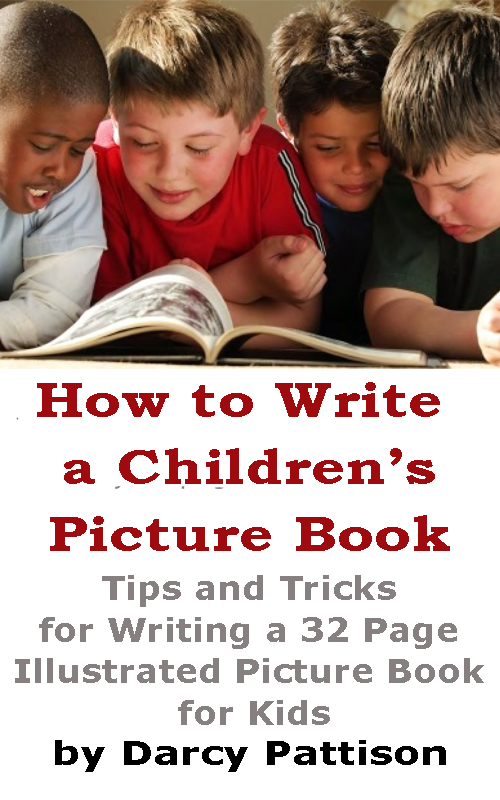 |
-

By: Martha Alderson, M.A.,
on 9/14/2010
Blog: Plot Whisperer for Writers and Readers
( Login to Add to MyJacketFlap)
JacketFlap tags:
Memoir, how to plot, plot for writers, a character plot, screenplay?, multiple plotlines, a romantic plot, step 5 of plot series, how to develop an action plot, how do I plot a novel, Add a tag
 For a story to have meaning, the dramatic action forces the character to grow and change at the least, transform at best. For a story to have meaning, the dramatic action forces the character to grow and change at the least, transform at best.
Each of these threads = dramatic action, character emotional development and thematic significance runs through every great picture book, middle grade fiction, young adult and adult novels whether genre or literary, all memoirs and screenplays.
All other plot lines are determined by age and type of story. However, one other plot line is in most stories, other than picture books and middle grade fiction = romantic plot line.
I’m starting a series of posts about plot this week – as requested. Thanks for popping in or sending me emails with your preference!
Plot and Character are Intertwined
Before I start talking about plot, I have to say something about characters, the people who will be DOING and REACTING to the plot. Obviously, they are intertwined. We all know that. Without some external events, there’s just a character spouting off his/her philosophy of life. Without characters, there simply are no events and no story.
I also know that stories begin many places, but that two common places are with a plot idea or character idea. Yet, I’m easily intimidated by the Character Folks, who insist that good stories must, of course, begin with Character.

I understand exactly what you mean; we read because novels are the only art form which allows us inside a person’s head to experience events with them and to understand life from a different point-of-view. And, in fact, character books are more likely to be considered a “literary” work of art than, say for example, a comedy or an action-thriller.
Yet, your Characters are nothing without events that challenge their very core.
Still the Character-First-and-Foremost Folk intimidate me, probably because I have to work harder at characterization because I’m such a private person myself. When a character wants to give the readers a look at his/her emotions, thought processes (the very things that make novels so unique), my response is, “Wait up.” That means you’re exposing yourself, your privacy might be violated, are you sure you want the world to know all that? Or, it’s just none of the reader’s business, and s/he had better butt out of your life. I struggle to commit the character to paper.
So, here I am talking about Plot or the events of a story and I’m okay with that. But without characters, especially the character’s emotional reactions to the events, all the work on plot is wasted. You can artificially separate these story elements, yet this thing we call a novel is so rich precisely because of how these are woven together.
OK, Plot. I’ll begin tomorrow with a discussion of the three levels of plot: outline, scenes, pacing.

 Armed with a long knife, flint-lock musket, and his father’s medical bag, fifteen-year-old Lorenzo Bannister sets off to fulfill his father’s deathbed wish. Lorenzo joins a secret flathoat operation delivering much-needed medicine and gunpowder to George Washington’s army, leading the reader on a romping ride from the docks of New Orleans to the battlefields of the American Revolution. This action-packed historical novel for young people tells the story of Gibson’s Lambs and the Spaniards, forgotten heroes of the struggle for independence. Armed with a long knife, flint-lock musket, and his father’s medical bag, fifteen-year-old Lorenzo Bannister sets off to fulfill his father’s deathbed wish. Lorenzo joins a secret flathoat operation delivering much-needed medicine and gunpowder to George Washington’s army, leading the reader on a romping ride from the docks of New Orleans to the battlefields of the American Revolution. This action-packed historical novel for young people tells the story of Gibson’s Lambs and the Spaniards, forgotten heroes of the struggle for independence.
Wow! How’s that for an exciting plot?
If you’d like to learn how to plot YOUR novel, become a member of the Children’s Writers’ Coaching Club today, then join us Friday afternoon at 3:00 central time when Lila Guzman will use her book Lorenzo’s Secret Mission as the basis for this week’s teleclass for club members.
How do you plot a book? What methods can you use to organize your thoughts? When do you introduce characters? How do you avoid the sagging middle? How do you bring the book to a satisfying conclusion. What are the special problems in writing a sequel?
Lila will answer these questions, plus many more during this LIVE 55-minute teleclass.
Don’t miss out!
Join the Children’s Writers’ Coaching Club right now and receive an email invitation to this fun and informative event, plus the study guide to use during the live teleclass on Friday!
Childrens Writers Coaching Club, how to plot, Lila Guzman, Lorenzos Secret Mission, plotting
|















 Armed with a long knife, flint-lock musket, and his father’s medical bag, fifteen-year-old Lorenzo Bannister sets off to fulfill his father’s deathbed wish. Lorenzo joins a secret flathoat operation delivering much-needed medicine and gunpowder to George Washington’s army, leading the reader on a romping ride from the docks of New Orleans to the battlefields of the American Revolution. This action-packed historical novel for young people tells the story of Gibson’s Lambs and the Spaniards, forgotten heroes of the struggle for independence.
Armed with a long knife, flint-lock musket, and his father’s medical bag, fifteen-year-old Lorenzo Bannister sets off to fulfill his father’s deathbed wish. Lorenzo joins a secret flathoat operation delivering much-needed medicine and gunpowder to George Washington’s army, leading the reader on a romping ride from the docks of New Orleans to the battlefields of the American Revolution. This action-packed historical novel for young people tells the story of Gibson’s Lambs and the Spaniards, forgotten heroes of the struggle for independence.